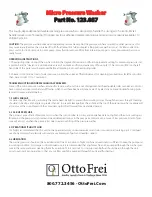
13.3 Detergent type and
quantity
The choice of detergent and use of
correct quantities not only affects your
wash performance, but also helps to
avoid waste and protect the environment:
• Use only detergents and other
treatments specially made for
washing machines. First, follow these
generic rules:
– powder detergents for all types of
fabric, excluding delicate. Prefer
powder detergents containing
bleach for whites and laundry
sanitization,
– liquid detergents, preferably for
low temperature wash
programmes (60 °C max) for all
types of fabric, or special ones for
woollens only.
• The choice and quantity of detergent
will depend on: type of fabric
(delicates, woollens, cottons, etc), the
colour of clothes, size of the load,
degree of soiling, wash temperature
and hardness of the water used.
• Follow the instructions that you find
on packaging of the detergents or
other treatments without exceeding
the indicated maximum level (
).
• Do not mix different types of
detergents.
• Use less detergent if:
– you are washing a small load,
– the laundry is lightly soiled,
– there is large amounts of foam
during washing.
• When using detergent tabs or pods,
always put them inside the drum, not
in the detergent dispenser.
Insufficient detergent may cause:
• unsatisfactory washing results,
• the wash load to turn grey,
• greasy clothes,
• mould in the appliance.
Excessive detergent may cause:
• sudsing,
• reduced washing effect,
• inadequate rinsing,
• a greater impact for the environment.
13.4 Ecological hints
To save water, energy and to help
protect the environment, we recommend
that you follow these tips:
• Normally soiled laundry may be
washed without prewash in order to
save detergent, water and time (the
environment is protected too!).
• Loading the appliance to the
maximum capacity indicated for
each programmes helps to reduce
energy and water consumption.
• With adequate pre-treatment, stains
and limited soiling can be removed;
the laundry can then be washed at a
lower temperature.
• To use the correct quantity of
detergent, refer to the quantity
suggested by the detergent producer
and check the water hardness of you
domestic system. Refer to 'Water
hardness'.
• Set the maximum possible spin
speed for the selected washing
programme before drying your
laundry in a tumble dryer. This will
save energy during drying!
13.5 Water hardness
If the water hardness in your area is high
or moderate, we recommend that you
additive for water softening. In areas
where the water hardness is soft it is not
necessary to use him.
To find out the water hardness in your
area, contact your local water authority.
Use the correct quantity of additive for
water softening. Follow the instructions
that you find on the packaging of the
product.
14. CARE AND CLEANING
WARNING!
Refer to Safety chapters.
ENGLISH
29
Summary of Contents for LFR71864B
Page 1: ...USER MANUAL EN User Manual Washing Machine LFR71864B ...
Page 41: ......
Page 42: ......
Page 43: ......
















































